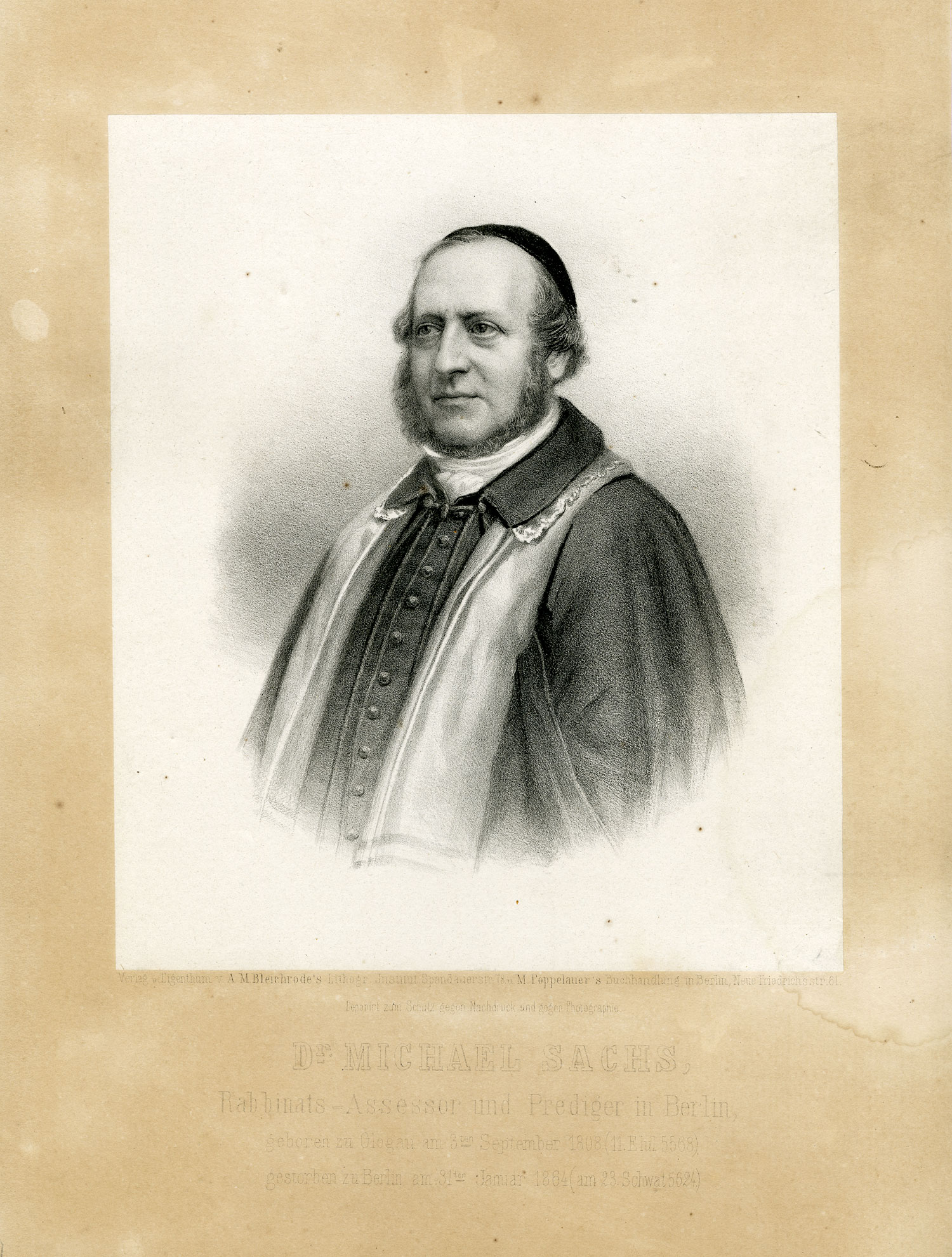German rabbi Michael Sachs (1808–1864) was a contemporary of Rabbi Samuel Holdheim (also discussed in this section) but had different ideas about Jewish religious practice and the role of a rabbi. Like reformers Abraham Geiger (1810–1874) and Holdheim, Sachs was educated at a German university, and he earned a PhD from the University of Berlin in 1836. He was the first university-educated rabbi to be employed by the Berlin Jewish community, starting a trend in other German congregations. Before coming to Berlin in 1844 as the choice of the community’s moderate voices to serve as assistant rabbi and preacher, he held a post in Prague.
In Berlin, Sachs began instituting minor reforms, including the use of a choir during services, a few German prayers and hymns, and German sermons. The congregation’s orthodox members opposed these changes but did appreciate Sachs’s eloquent sermons, in which he denounced ideological reforms and preached adherence to Jewish law. The more reform-minded members of the community had been hoping for a reformer like Geiger, or, perhaps, Holdheim, with whom Sachs was soon competing in the capital city. The crucial point in Sachs’s opposition to the direction of Reform Judaism came to a climax over the issue of whether to use an organ in Jewish services. Rather than concede to such use, Sachs decided to retire from the rabbinate. Exemplifying the modern rabbi, Sachs was both a scholar and a preacher (prediger). He contributed to a German translation of the Bible and completed a poetic German-language translation of the machzor, the prayer book used during the High Holidays of Rosh Hashanah and Yom Kippur.
